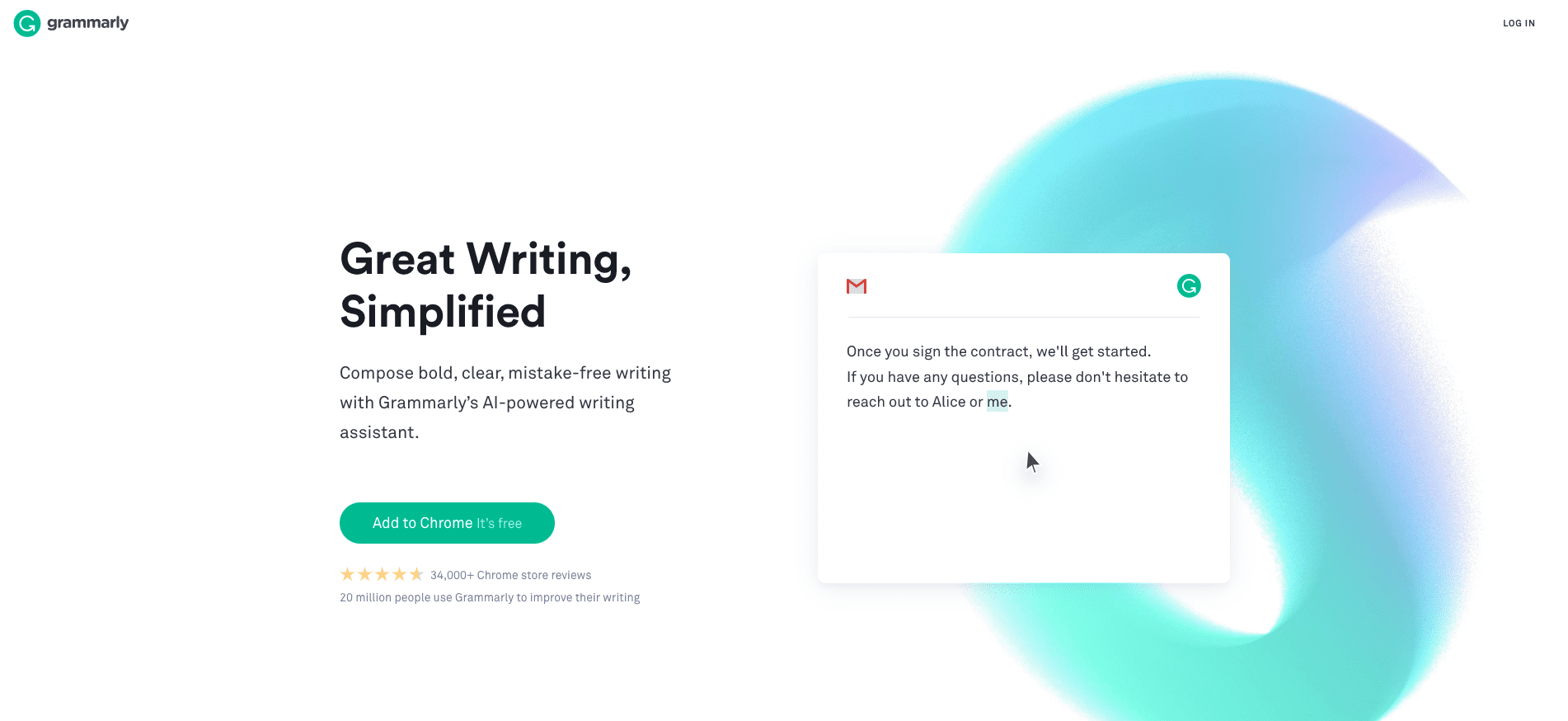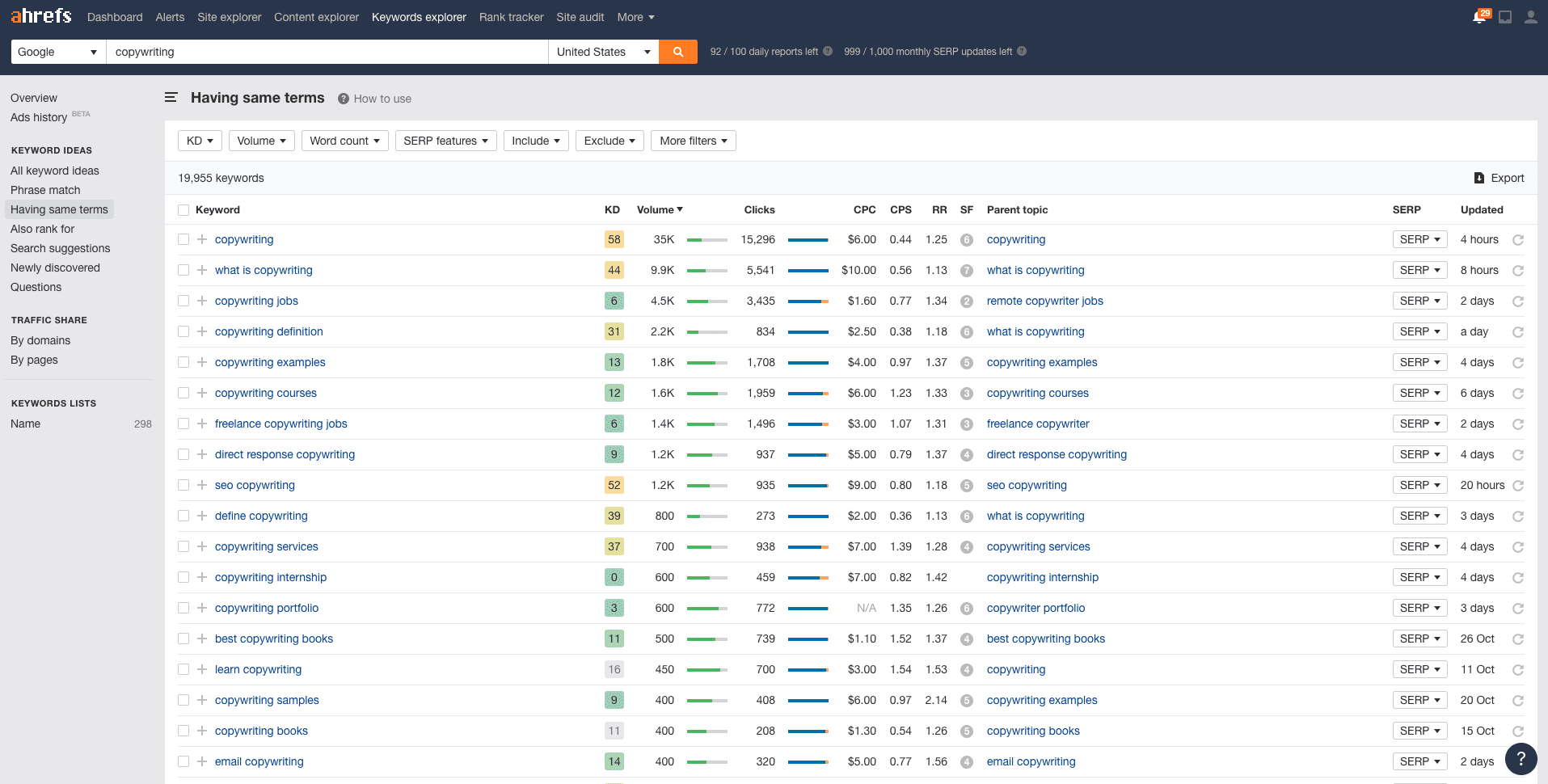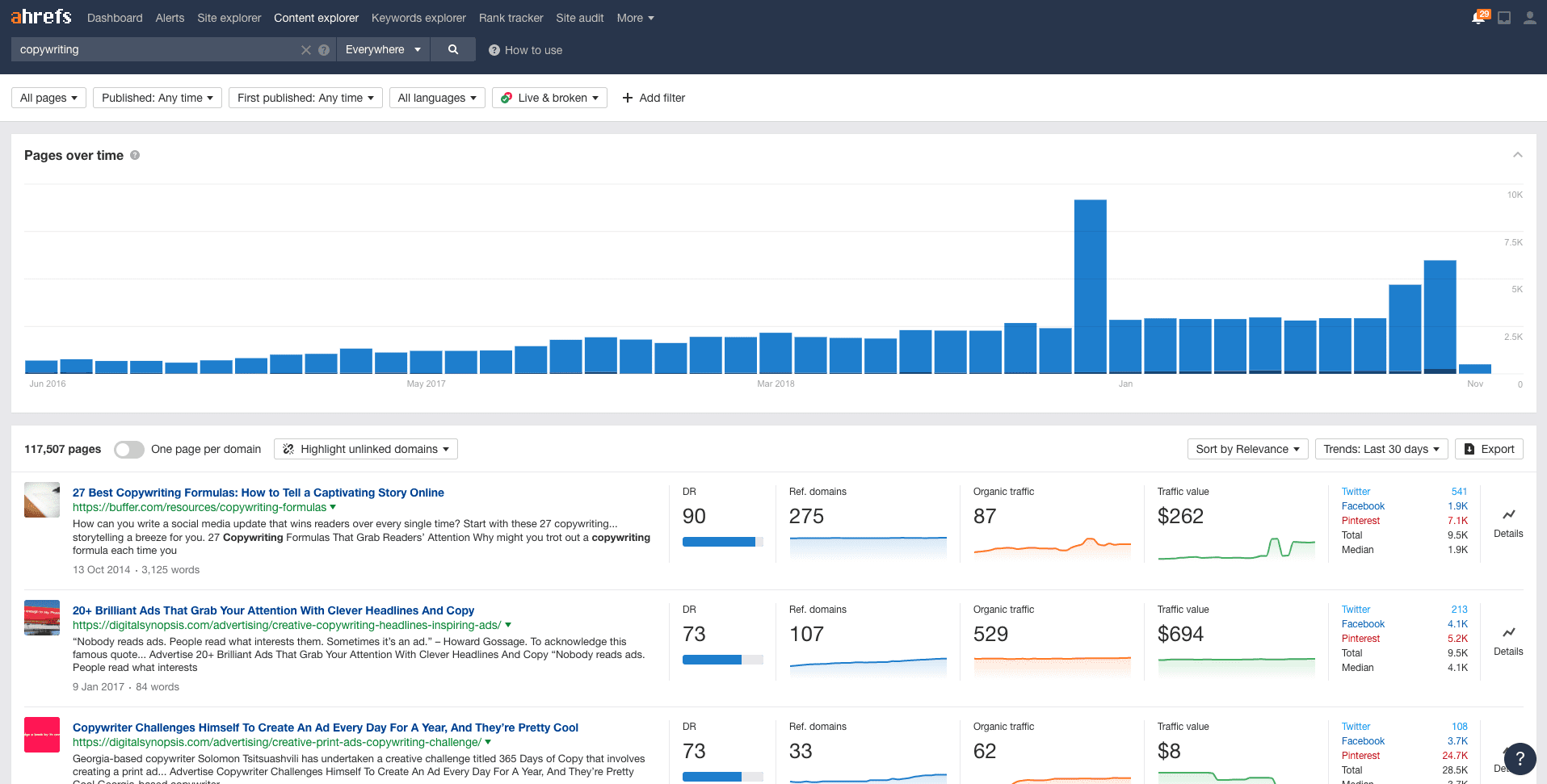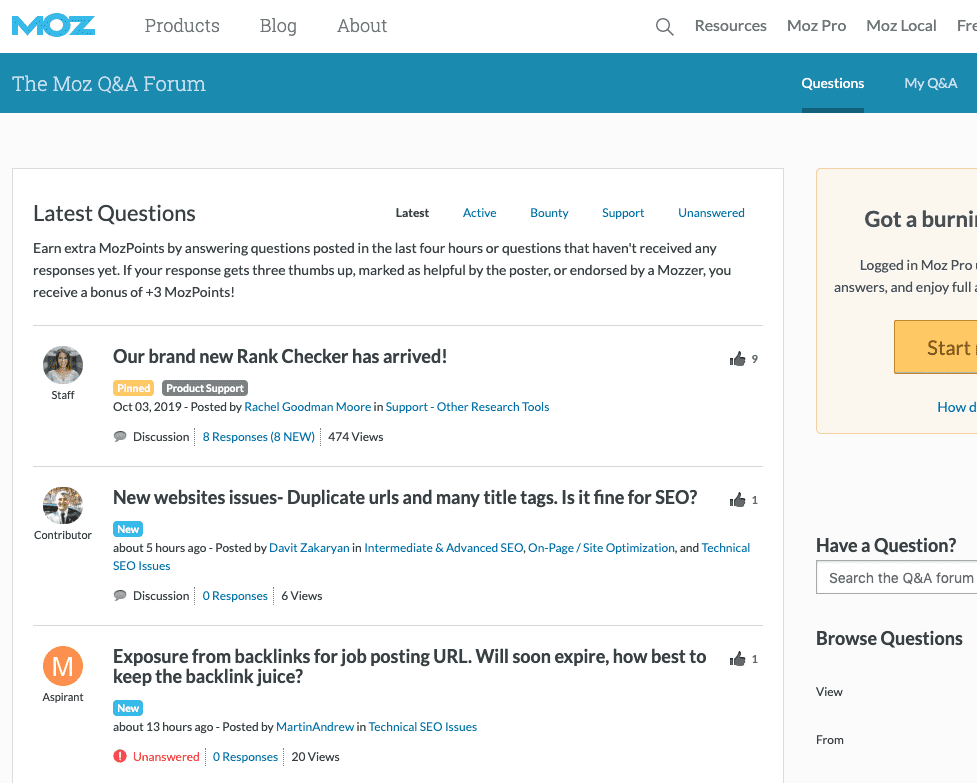How To Write a News Article (+4 Tools, Examples & Template)

By Dmytro Spilka
Nov 6, 2019

By the late 1400s, the printing press had been perfected, and Germany began publishing pamphlets containing news content. Realising the power of printed news, several papers in London became popularised in the years following 1621.
Almost 400 years later, the transition from print to online has had a profound impact on the way we consume news and subsequently, how we create it. You’ve probably already noticed that the morning paper covers the news that was instantaneously delivered to your mobile device the night before.
The nature of online news reporting allows journalists to simultaneously watch an event unfold and update their readers in real-time. Both print and online news articles aim to discuss current or recent news in local happenings, politics, business, trade, technology and entertainment.
Typically, a news article on any topic and at any level will contain 5 vital components for success . This is what separates news-article writing from other forms of writing.
1. Headline
These 5-12 words should deliver the gist of the whole news. In most cases, it’s important not to play with words or to be too cryptic. A news article headline should be clear and succinct and tell the reader what the article is about. Should they find the topic interesting, they will probably read the article.

Whilst headlines should be clear and matter-of-fact, they should also be attention-grabbing and compelling. According to some sources, eight out of ten people will read headline copy and only two will continue to read the rest of the article (Campaign). So, if 80% of people are unlikely to ever make it past the headline, there is plenty of room to spend extra time in crafting the perfect headline for your news article.
This BBC headline definitely makes people give it a second look. At first glance, you probably noticed the words “Goat” and “Ronald Reagan” and wondered what on earth has brought this farm animal and 80s U.S. president to exist within the same sentence- let alone the same headline . Closer inspection lets the reader know that the article is about goats’ helping to save the Presidential library in the California fires. Most would want to know how, so they read on.

Put simply, this string of words tells people who wrote the article and is usually prefaced by the word ‘by’. This component really depends on the company you write for. Whilst most magazines and newspapers use bylines to identify journalists, some don’t. The Economist, for example, maintains a historical tradition where bylines are omitted and journalists remain anonymous. In such cases, the news article reflects the publication as a whole.
3. Lead paragraph
This is the section to get straight down to the facts and there is no time for introductions. A lead paragraph must be constructed to attract attention and maintain it. To do this, the basic news points and facts should be relayed without digressing into detail or explanation. Those are forthcoming in the next section of the article.
Included in the lead are what journalists refer to as the 5 Ws: Who, what, when, where and why. To some extent, by simply stating each W, some form of lead is automatically formed. For example; “ An off duty nurse and paramedic used a makeshift tourniquet to save the life of British tourist whose foot was bitten off by a shark in Australia on Tuesday”.
- Who – an off duty nurse and paramedic and a British tourist
- What – built a makeshift tourniquet
- When – Tuesday 29th October 2019 (article published Wednesday 30th October 2019)
- Where – Australia
- Why – to save the life of the British tourist
This should conclude your lead paragraph and have your readers engaged and interested to learn more about the news. Resist the temptation to include additional details about the event as they have no place here. Structure is everything and you wouldn’t want to mess up the flow of the overall piece.
4. Explanation/discussion
A good place to start when writing the paragraph that follows your lead is to jump into the shoes of your readers and think about what they might want to know next. What are the factors that seem obscure, or most fascinating and is there scope to delve into more explanatory detail to put it into the wider context?
To do this well, the writer must have access to the answers to these questions.
Expanding on the details of your 5 Ws is all about providing in-depth coverage on all the important aspects of your news. Here, you should reflect on your first-hand information. Add relevant background information that explores the wider context. In other words, consider whether this story has implications on anything else.

Include supporting evidence in this section. This can take the form of quotations from people involved or opinions of industry experts. Referring to credible sources in your news article will add value to the information you publish and help to validate your news.
Ensure that the use of your quotations add value and are informative. There is little use in providing a quote that doesn’t shed light on new information. If the point has been made clear in your lead paragraph – there is no need to repeat it here.
For example, “An off duty nurse saved the life of a British tourist’, said Police Chief John Adams.” This quote tells the reader what they already know as this is the information stated in the lead.
Rather, “It was a long way back to shore and if he continued to bleed that much all the way back I’m not sure he’d have made it” – said Emma Andersson, off duty nurse.’ The inclusion of this quote gives a deeper insight into the severity of the incident and adds value to the article.
5. Additional information
This space is reserved for information of less relevance. For example, if the news article is too long, get the main points down in the preceding paragraphs and then make a note of the trivial details. This part can also include information about similar events or facts that somewhat relate to the news story.
What makes a news article so powerful
The ultimate aim of a news article is to relay information in a specific way that is entertaining, informative, easily digestible and factual . For a news article to be effective, it should incorporate a range of writing strategies to help it along. It should be:
Active not passive
Writing in the active tense creates a more personal link between the copy and the reader. It’s more conversational and has been found to engage the audience more. It also requires fewer words, so shorter and snappier sentences can be formed.
For example “A British tourist’s life was saved by an off duty nurse” is longer and less colloquial than “An off duty nurse saved a British tourists’ life”. The latter is easily understood, more conversational and reads well.
Positive, not negative
Whilst it is true that certain publications might use language to swing the sentiment of their copy, news should give the reader the information they need to inform their own opinion . The best way to do this is to avoid being both negative or positive. A neutral tone reads well and draws attention to key issues.
It’s often more effective if your news article describes something that is actually happening rather than something that’s not. For example, rather than stating that “the government has decided not to introduce the planned tuition funding for university students this academic year” a more palatable account of the event would be “the government has abandoned plans to fund university tuition this academic year”.
Quote accurately
We now know that the use of quotations belongs in your explanatory paragraph. They validate what you’ve said and inject emotion and sentiment to your copy. But what makes a good quote? And how and when are they useful?
Writers should be able to differentiate between effective and ineffective quotes. They should also appreciate that a poorly selected quote placed in an inappropriate paragraph has the power to kill the article.
Consider who you are quoting. Is their opinion of interest to your readers? Quotes that are too long can grind on your reader’s attention. Especially if they are from bureaucrats, local politicians or generally just boring people with nothing significant to say. Rather, the shorter and snappier the quote, the better. Bald facts, personal experiences or professional opinions can add character and depth to the facts you’ve already laid out.
Direct quotes provide actuality. And Actuality provides your article with validation. Speeches and reports are a great source of quotes by people that matter to your story. Often such reports and transcripts can be long and tiresome documents. Great journalistic skill is to be able to find a usable quote and shorten it to make it more comprehensible. Second to this skill is to know precisely when the actual words used by a person should be quoted in full.
Remember, people ‘say’ things when they speak. They don’t “exclaim, interject, assert or opine”. Therefore, always use the word “said” when attributing a quote. For example, “three arrests were made on the scene” said PC Plum.
Sound use of adjectives
The golden rule here is that adjectives should not raise questions in the reader’s mind, rather they should answer them. Naturally, an adjective raises further questions. For example:
- ‘Tall’ – how tall?
- ‘Delightful’ – according to whom?
- ‘Massive’ – relative to what?
Unless followed by further information, adjectives can be subjective. However, this isn’t always bad. If they contribute to the relevance of the story, keep them. Just be sure to ponder each one as to whether they raise more questions in the reader’s mind.
Lastly, it’s always better to approach news-style writing directly and specifically. Use words like ‘gold, glitter, silver,’ instead of ‘bright and sparkly’. Being specific isn’t dull or boring. It allows readers’ to follow the article with a more accurate understanding of the news. Vagueness does not.
No Jargon or abbreviations
Those working in an organisation or specific industry will often take for granted the fact they’re surrounded by jargon. It’s a convenient and efficient way to communicate with those who also understand it. These terms become somewhat of a secret language that acts to exclude those on the outside. This must be assumed at all times when writing news. There’s no telling whether an article on a new medical breakthrough will be read solely by medical practitioners and scientists. In fact, it almost certainly won’t be.
If readers feel lost in your article or have to look elsewhere for explanations and definitions of acronyms and abbreviations, it’s unlikely they’ll return. The rule here is to avoid them or explain them.

Be cautious with puns and cliches
Over and over you hear them and rarely do they evoke any positive response; cliches have no place in your news article. Yet, as for puns, lots of headline writers find these neat little linguistic phrases irresistible.
The problem is, they can be just as exclusive as unrecognisable jargon. References to the past that are well received by readers over 55 years old, means risking a large portion of readers being left out.
Is there a tasteful and refined way to use puns, cliches or metaphors ? Yes, but one always bears the risk of some readers not understanding and abandoning the article altogether. Take the following example:
The Sun’s headline “Super Caley go ballistic, Celtic are atrocious” echoing Liverpool’s earlier “Super Cally goes ballistic, QPR atrocious”.
In all fairness, both are great puns and will have had most readers humming the Mary Poppins anthem all afternoon. But to fully appreciate this play on words, it helps to know that ‘Cally’ is the former footballer, Ian Callaghan and ‘Caley’ is the team Inverness Caledonian Thistle.
Those with no interest or knowledge of football would have been immediately excluded from this article. However, given the fact that the article was clearly aimed at football enthusiasts or at least, fans, the aim was never to produce an all-inclusive article in the first place.
Write in plain English (make it easily digestible)
Articles written in plain English are easy to digest. This is especially important what discussing complex or technological news. Most readers won’t have the time to decipher cryptic or overly elaborate writing styles whilst keeping up with the news story being told.
Clear and unambiguous language, without technical or complex terms, should be used throughout. As the amount of news we consume each day has increased with the internet, mobile devices and push notifications, it is important to keep things simple. We now have the pleasure and task of retaining more news than ever before. This is easier to do when the news we consume is clear, succinct and written in plain English.
Be timely and up to date
News gets old fast. Today’s news is tomorrow’s history. So, timeliness in the news industry is imperative to its success. Similarly to freshly baked goods – news should be served fresh. Once it’s old and stale, nobody’s interested in it. Don’t, however, take the risk of serving it before it’s ready.
There is great skill attached to being a timely journalist. Capabilities must range from gathering research in good time, to writing content at speed and editing accurately under pressure. There are a few things you can do to help stay on top of the latest affairs and find time to write.
First, a conscious effort to stay up to date with news on all levels is necessary. That is international affairs, governmental, regional and local levels. You should have a solid awareness of ongoing issues and debates across all mediums. For example, If there’ve been developments on ongoing peace treaties, you should be able to pick up the news story as it is – without the need to revise the entire story.
It’s likely that you’ll be under the pressure of several tight deadlines. Don’t just keep them in mind, write them down. Keeping a content calendar is an effective way to organise your time and make sure you’re hitting all deadlines accordingly. Whether it’s your phone calendar or an actual deadline diary, a visual representation of time can help you distribute tasks and stick to a schedule.
Always be available when a press release comes your way. If you’re not there to cover the story, someone else will. Organise a backup just in case you’re unavailable to make sure all necessary information reaches you in emergency situations. Having such a plan in place can save time when it comes to researching and writing news articles. The writing process becomes easier when all the material is at hand.
Make it entertaining
A good news article will entertain its readers. To do so, the article should contain some human interest. In general, it’s been found that people are interested in the lives of other people. An article that appeals to the voyeuristic part of human nature is immediately entertaining.
For example, a flood in an empty building doesn’t have nearly as much human interest as a flood in a building full of people and belongings. Sad, but true. Simply because we identify with each other, we are interested in reading about each other too.
If your story has an interesting or relatable person at the heart of it, it should fuel your article . Tug at the emotional strings of your readers and make a connection between them and your story. Look hard enough, and you’ll find human interest everywhere. Writing a business article about a new project manager with a passion for bringing tropical fruit flavours to toothpaste? There’s human interest here. We all use toothpaste – whilst some will be onboard with this idea, others will scoff and remain faithful to their dependable mint flavoured paste.
Prepare to tap into your inner literary comic. If the story you’re working on is funny, don’t hold back. Just as most journalists enjoy working on a story that hits their ‘quirky button’, most readers will be more inclined to read a story that plays on their humour strings.
Fact check everything
‘Fake news’ has become a familiar term, especially for journalists. Unverified facts and misleading claims have blurred the line between journalism and other content creation. It’s now more important than ever to fact check everything .
A good PR tip is to avoid a reputation disaster rather than repair one. You do not want to fall into the category of fake news. This might drive away potential returning readers and significantly reduce readership.
Using statistics, figures and facts are a great way to add validity and actuality to your article. They lend themselves to originality and make your article more credible when used correctly. Without checking the authenticity of these facts, you risk delivering an article that is grounded in fiction.
News article writing tools
To hit the nail on the head and deliver a news article that is well researched, well written and well-received; take advantage of some online writing tools to help you along the way.
1. Grammarly

This free and comprehensive writing tool is practically everything you need to craft grammatically correct and error-free copy. Not only does it check your spelling and grammar, but punctuation too. Grammarly uses context-specific algorithms that work across different platforms to help make your content flow seamlessly throughout.
2. Headline Analyzer

Analyse your headlines for free and determine the Emotional Marketing Value score (EMV score). Headline analyzer analyses and scores your headlines based on the total number of EMV words it has. Headline Analyzer also tells you which emotion your headline most impacts, so you know whether you’re on the right track from the get-go. So, along with your score, you’ll find out which emotion your headline piques at, be it intellectual, empathetic or spiritual.
Writing for the web requires a distinctive set of skills than those required for print. The way readers use the online space and in particular, the search engines have changed the way they consume news. Ultimately, out of the millions of web pages, readers should be able to find yours.
Be mindful of the words you use in your article. Search engines assume that content that contains words or phrases that have or are likely to be searched by researchers, is more relevant content. As such, it bumps it up to higher-ranking positions.
You can easily find out which precise words have been in popular searches and which phrases you should incorporate into your article. Use Ahrefs Keywords Explorer tool to explore seed keywords, industry keywords, and generate keyword ideas.

You can also use Ahrefs Content Explorer to search for any keyword and get popular content that drives traffic.

4. Discussion forums

Online communities and discussion forums are a great source for journalists to broaden their network and keep up-to-date with the latest media news. Find useful tips and the latest news in the following groups:
- Journalists on Facebook, contains more than 1.3 million fans and over 9,000 journalists. It’s one of the most established journalism communities online. You’ll find inspiration and a place to find and discuss breaking news.
- LinkedIn for Journalists is a highly active community featuring a section dedicated to advice and discussion points for journalists. Take advantage of monthly free webinars that cover how to generate story leads, build sources and engage audiences.
- /r/journalism on Reddit, opens the door to nearly 10,000 members, posting questions, advice, interesting news stories and professional opinions on recent and breaking news. Not only is it a source of news stories, but also a place to find an extremely diverse mix of opinions and story angles.
A structural combination of the essential components of a news article , as noted in the first section of this post, will put you in the right direction. Once you have your framework – made up of a working headline, lead, preliminary explanation and additional notes – you can begin to pack it with all the elements that bring a news article to life.
Turn to Ahrefs and online communities for inspiration and make use of writing and editing tools like Grammarly for the entire process. This will save you time editing (crucial in the news media world) and improve the quality of your article to get it to the top of those SERPs.
Remember, there’s always a human interest, you just have to find it. It’s this element that will determine the level of engagement your article stimulates. Just keep in mind, most people are either interested in how a news story will affect their own lives or how another person’s life is being affected.
By the end of the process, you should have a news article that is in good shape and ready to entertain, educate, inspire or inform your readers. The last thing to do but certainly no less crucial is to fact check everything. A sub-editor can be handy when it comes to catching typos and picking up grammatical errors, but fact-checking is primarily down to the writer.
News Article FAQ
[sc_fs_multi_faq headline-0=”h3″ question-0=”How long should a news article headline be?” answer-0=”Headlines that are between 5-12 words (up to 65 characters) are generally more effective.” image-0=”” headline-1=”h3″ question-1=”How long should a news article be?” answer-1=”The word count is unlimited. It all depends on the nature of your news article. However, as a general rule, Google needs at least 300 words of content to grasp the context of the page.” image-1=”” headline-2=”h3″ question-2=”How to cite a news article?” answer-2=”Generally, you would need to add the name of the source, the name of the author and a hyperlink to the original source.” image-2=”” headline-3=”h3″ question-3=”How to fact check a claim, statement or statistics?” answer-3=”The claim, statement or statistics must be verifiable by a credible source. Context plays a massive role in fact-checking, hence, simply taking citing figures may not qualify as proper fact-checking.” image-3=”” count=”4″ html=”true” css_class=””]
Join 1000s of
Using solvid ..

Solvid is a creative SEO, Content and Digital PR agency. Solvid is a registered trademark of Solvi & Heirs LTD, registered in England and Wales. Registered Address: 6 St. Davids Square, London, England, E14 3WA
VAT: GB 326425708
Reg: 09697233
Our Services
Content Writing
Guest Posting
Content Marketing
Link Building
Useful Links
Case Studies
Log in or Register

IMAGES
VIDEO
COMMENTS
This is what separates news-article writing from other forms of writing. 1. Headline. These 5-12 words should deliver the gist of the whole news. In most cases, it’s important not to play with words or to be too cryptic. A news article headline should be clear and succinct and tell the reader what the article is about.